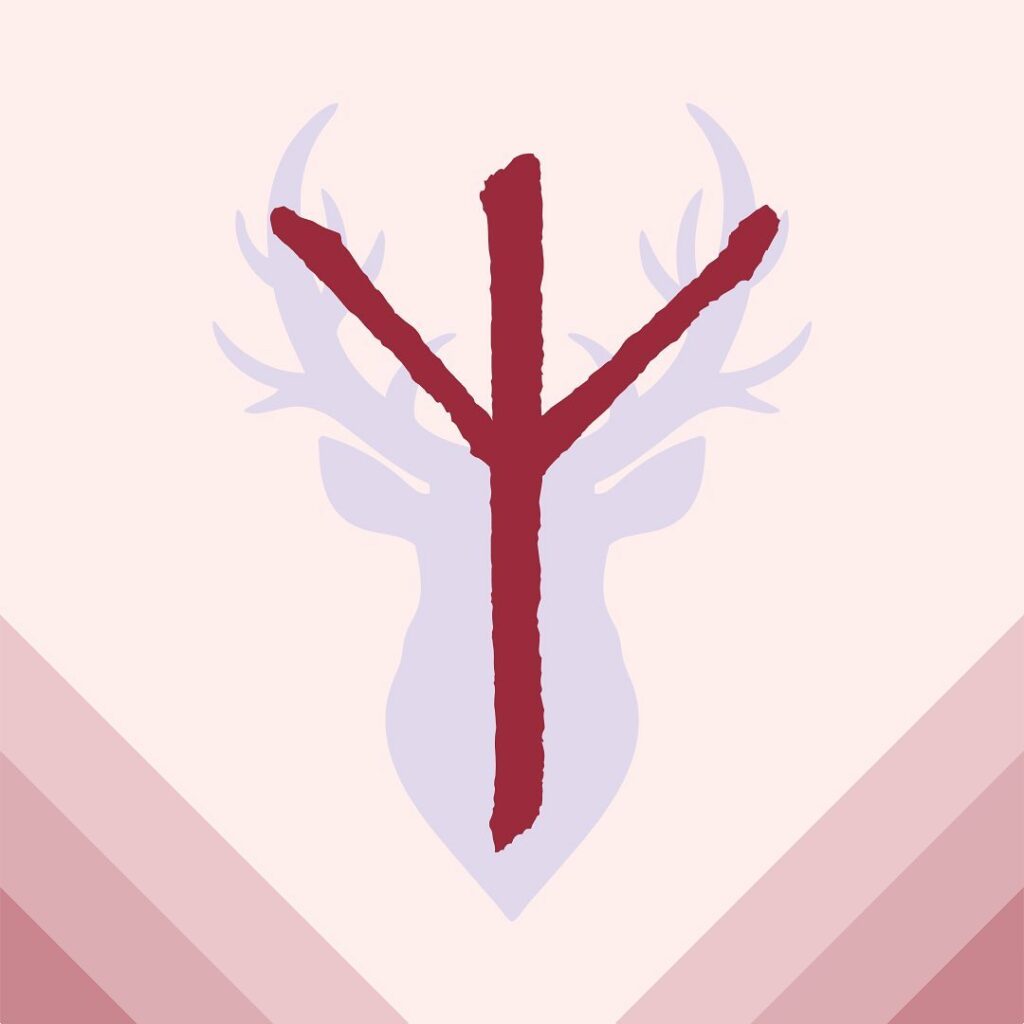Diving once again into the captivating realm of Viking Age symbolism, we turn our attention to the Elder Futhark, the oldest runic system known to us. This post is focusing on Algiz, the fifteenth rune, second to last of the second aett, also known as the Hagall’s aett. Renowned as a symbol of protection and divine connection, it holds a special place in the annals of Old Norse mythology.
Algiz: Background and Description
Let’s delve into the Elder Futhark, the earliest known runic alphabet. The rune we’re focusing on is Algiz, which is the fifteenth character in this ancient sequence, coming after Eiwaz and before Sowilo. Its name, “Algiz,” is derived from Proto-Germanic and is generally interpreted as “elk” or “protection.”
The Elder Futhark, which it is a part of, was prevalent across Europe. From the icy expanses of Scandinavia to the lush islands of Britain, and even as far as the sun-drenched coasts of Italy, these runes left their imprint. Algiz, positioned fifteenth in this sequence, has been discovered on both majestic runestones and ordinary everyday objects, demonstrating its broad use and importance.
The etymology of “Algiz” is intriguing. Rooted in the Proto-Germanic “*algiz,” it’s associated with protection and defense. This gives us a glimpse into the mindset of the ancient Germanic peoples, showing us that they valued protection and sought it in their lives.
Graphical Representation

Visually, Algiz is a simple yet elegant rune. It’s composed of a vertical line with two branches angled upwards at the top, forming a shape reminiscent of an elk’s antlers.
Historically, variations of its design have been found. Some inscriptions show the rune with more curved branches or with the branches angled downwards. However, the traditional form remains the most recognized and used.
Phonetic Value
In the Proto-Germanic language, Algiz represented the sound “z,” as in “zeal.” As Germanic languages evolved, so did the pronunciation of this rune. In Old Norse, for example, it was pronounced as an “r.”
Symbolic Meaning of the Algiz Rune
Now, let’s delve into the symbolic heart of Algiz. This rune is traditionally associated with protection and defense. It represents the protective instincts, the desire to safeguard oneself and others.

The rune is also linked to a connection with the divine, reflecting a state of spiritual awareness and enlightenment. It’s a reminder of the importance of spiritual protection and guidance in life, and the role they play in a balanced and fulfilling existence.
The Guardian God Heimdall is a central figure in Norse mythology, embodying protection and watchfulness. Algiz, with its associations with protection and divine connection, reflects these themes, offering a glimpse into the values and beliefs of the ancient Germanic peoples.
The Aett and its Symbolism
Algiz belongs to the second aett of the Elder Futhark, a group of eight runes associated with the god Heimdal. This aett, or family of runes, carries themes of resilience, survival, and the cyclical nature of life. Reflecting he challenges and trials of life. Algiz, with its themes of protection and divine connection, adds a layer to these themes.
The Guardian God Heimdall, associated with the second aett, is a figure of watchfulness and protection. His qualities resonate with Algiz’s symbolism, adding depth to our understanding of this rune.
Elder Futhark Quiz
Do you want to test your knowledge of Elder Futhark runes? Then this quiz is perfect for you!
Don’t forget to play our other games as well!
Algiz Used in Divination and Magic
Now, I must admit, I’m not a believer in divination or magic. But, I find the historical and cultural aspects of these practices fascinating. Algiz, like other runes, has a place in these traditions.
In runic divination, Algiz is often interpreted as a sign of protection and guidance. It’s seen as a positive omen, suggesting that the divine is watching over the person or situation in question.
Historically, Algiz was also used in magic and spellwork. Its protective symbolism made it a popular choice for spells aimed at safeguarding individuals or places. While we don’t have specific examples of these spells, the rune’s symbolism gives us a clue about how it might have been used.
Frequently Asked Questions
Algiz symbolizes protection and connection with the divine. It’s a rune of safeguarding and spiritual awareness.
In divination, Algiz is seen as a positive omen. It suggests that protection and guidance are present in the situation or person’s life.
In the Proto-Germanic language, Algiz represented the sound “z.” In Old Norse, it was pronounced as an “r.”
It belongs to the second aett of the Elder Futhark, associated with the Guardian God Heimdall
Featured Image Credit: BK, Public domain, via Wikimedia Commons
